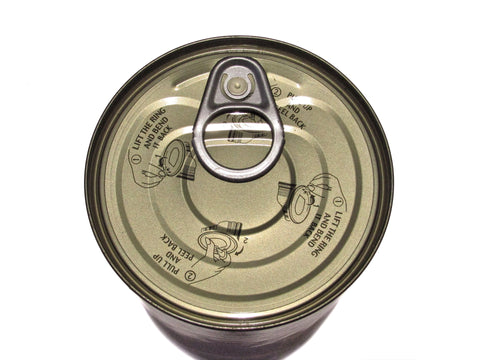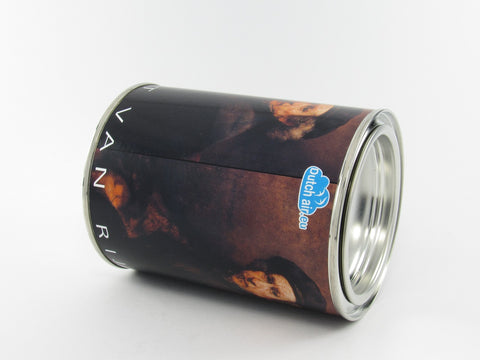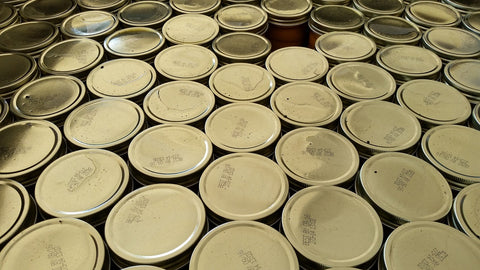Canning Lids & Supplies: How To Tell If A Canning Lid Is Good?
People who regularly can their food know that it is a fantastic way to enjoy the bounty of the harvest all year long. But, if you want your canned goods to last for years, you need to make sure you’re using the right canning lid and supplies.

Image by Ellesans from Pixabay
A Few Essential Canning Lids and Supplies are:
- Canning lids (metal or plastic); 3, 2, or 1-piece canning lids.
- Jar lifter tongs.
- Wide-mouth canning funnel.
- Canning pot.
- Lid lifter.
- Measuring scale.
A metal spoon test or pressing the lid test is a foolproof way to determine if the canning lid is secure. If it is tight, the sealing is good; if the lid snaps back, the seal is unreliable.
Knowing how to tell if a canning lid is sealed is effortless and IMPORTANT.
Having the right supplies is crucial for ensuring a successful and safe canning. One essential component of canning is the lid, which seals the jar and prevents bacteria from entering. There should be a better understanding of which canning lid supplies are best suited for long-term preservation and storage.
So let’s get started!
1. What Should You Consider When Shopping for Canning Supplies?
When shopping for canning supplies, it is crucial to consider the type of canning lids, the size of the jars, and the quality of the canning supplies.
Canning Lids: One of the most important things to consider is the type of canning lid supplies you need. Two primary types of lids are available for canning: reusable and disposable.
Reusable canning lids are made of metal and have a rubber gasket that creates an airtight seal. They are eco-friendly and cost-effective compared to disposable lids but require careful handling and meticulous cleaning to prevent rust and bacterial growth.
It is also noteworthy to mention that with frequent gasket changes, some of them can last even a lifetime.
On the other hand, disposable canning lids are made of metal or plastic-coated cardboard and are designed for single use. They are more convenient to use than reusable lids, but they can be expensive over time and may not be as reliable for long-term storage.

Image by Dutch Air from Pixabay
Jar Size: Another vital factor to consider when shopping for canning supplies is the jar size you want to use.
The most common jars used for canning are Mason jars, which come in various sizes ranging from 4 oz. to 1 gallon. Depending on the type of food you are canning, you will need to select a jar of appropriate size.
Additionally, you will need to purchase lids compatible with your selected jar size.
Quality Of Canning Supplies: You should also consider the quality and durability of the canning materials you purchase. Some cheaper canning lids may fail to seal properly, resulting in food poisoning or food spoilage. Therefore, it is recommended to invest in high-quality canning lids manufactured to precise standards to ensure a secure, airtight seal.
2. How to Ensure Your Canning Lid is Securely Sealed?
An easy method to ensure that your canning lid is secure is when you hear that satisfying “pop” sound which lets you know that the lid has been properly sealed and is airtight.
If you are still unsure, wait for the jars to cool completely, then press down on the center of the lid. If it doesn’t move or make a popping noise, your jar is sealed tight!
Proper sealing makes your canned goods last much longer and taste just as delicious months later.
3. How Can You Tell If A Canning Lid Is Durable?
Well, the truth of the matter is that canning lids are typically not durable or reusable, unlike the other canning supplies. However, if you’re determined to reuse your canning lids, a few options exist.

Image by jaymethunt from Pixabay
Consider the Tattler or Harvest Guard brands, which are specially designed to be reused, with the latter being more cost-effective. Additionally, a European brand called Weck may also be a good option for you. But, again, double-check to see if you are buying the original, as you don’t want to end up buying one of the many imitations that are there in the market.
With some research, you can find the best canning lids for your needs and feel confident that your canned food will be safely preserved.
4. What Are the Common Canning Mistakes to Avoid?
- Overloading the Jars: One of the most common mistakes that most of us make is overloading the jars. It can be tempting to fill the jars to the brim (and squeeze in as much as possible), but this can actually prevent the lids from sealing perfectly.
- Tweaking the Recipe: It is essential to follow the recipe exactly to ensure that the appropriate acid levels are present in the food to prevent spoilage.
- Choosing the Wrong Method: Choosing the wrong canning method can also be a problem, as canning vegetables, meats, poultry, and seafood require a pressure canner rather than a water bath canner, which is only suitable for pickles and jams.
- Super Tightened Lids: It’s only natural to tighten the lids to a super snug to ensure proper closure but not so for canning. Fingertip tight is more than enough. Otherwise, it can prevent the necessary air release while processing the jars.
- Reusing Lids: The lids should only be reused if explicitly designed for reuse. Else, it is such a waste of all your time, hard work, and resources.
- Using Damaged Jars: Reusing your old jars is perfectly fine, but make sure the jar you are considering using is flawless. Cracked, chipped, or nicked jars don’t pass the quality test and are a big no-no for canning.
Canning has become a popular hobby for many people. However, avoid these common mistakes to make your canning endeavors a success. Keep the quality of your canning supplies in mind, and always opt for reliable canning supplies to enjoy the labor of your hard work.
Good luck with your canning adventures!

